Issues of health, skin, weight, well-being and more will sooner or later lead to proper nutrition. Proper nutrition isn't always a strict diet, not a diet without good things, or exhausting yourself. It's a way of life that requires conscious approach.
healthy diet- This is the foundation for building a general healthy and energetic physical state, good mood, external attractiveness and performance.
principles of proper nutrition
Proper nutrition is based on the following principles:
- diet variety. To lose weight, you don't need to eat just kefir and cucumbers! The menu should be delicious, healthy and varied.
- Power Score. Daily calorie intake should be divided into three meals and one or two snacks. Breakfast - 30%, lunch - 35%, dinner - 25%, two snacks - 10%. In some cases, people adhere strictly to three meals a day, for example, in the case of disturbances in carbohydrate metabolism, insulin resistance develops. While in some cases, like adrenal fatigue syndrome, five meals a day are necessary, fasting can do more harm than good.
- Most of the menu should be natural products, without artificial additives, sugar and sweeteners.
At the same time, the diet should meet the standards of calories, protein, fat, carbohydrates, if in addition to switching to proper nutrition, you have the task of adjusting your weight.
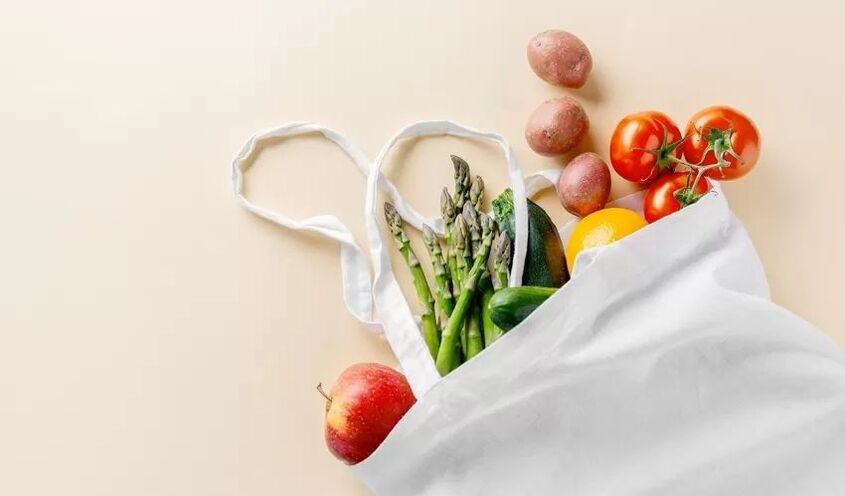
There are also some principles that can help you improve your eating habits.:
- drink enough (at least 2 liters per day) of clean water;
- Eat when he starts to feel hungry - it is very important to eat exactly when you are hungry, preferably without snacks, to prevent insulin resistance, ideally - three meals a day;
- chew each bite well and, more importantly, eat slowly and consciously, setting your fork aside to chew;
- eat in a calm state;
- Focus on the process while eating;
- Sit and eat, preferably with both feet on the ground;
- Active throughout the day - at least 10, 000 steps per day that have not been cancelled;
- eat freshly prepared food;
- eat more fiber - fresh fruits and vegetables;
- Eat fish at least 2 times a week to get omega 3 fatty acids from food.
How to start the transition to proper nutrition
The transition to a new type of nutrition consists of five steps:
- Eliminate unhealthy foodsContains so-called "empty calories". These are pastries, sweets, candies, sausages and semi-finished products, mayonnaise, sauces.
- Eliminate alcohol. Some studies suggest that the drink affects neurons in the brain responsible for appetite. The more one drinks, the more one eats. In addition, the intake of alcoholic beverages is often accompanied by various snacks, snacks, which are highly undesirable.
- track water balance. Every day you need to drink at least 1. 5 liters of purified water. The approximate ratio is calculated by the following formula: 30 ml per kg of ideal body weight.
- formulate a diet. As mentioned earlier, it is necessary to divide the daily calorie content into several meals. For everyone, set the most convenient time and stick to it. The schedule for all days should be roughly the same.
- Gain strength and patience. Switching to a new lifestyle can be challenging.
In fact, the process of changing habits is extremely complex. The usual advice doesn't help. Don't read weight loss reviews on the internet about miracle diets. In fact, only 2% of people are able to lose weight at home on their own without compromising their health. In all other cases, qualified assistance from a weight loss specialist is required. These are nutritionists, psychologists, and personal counselors.
List of products for proper nutrition
When creating a healthy eating plan, be sure to include the following products on your menu:
- Sea fish and seafood. Fish oil may reduce the risk of cholesterol plaque, heart attack and stroke. The presence of fish in the diet can improve the condition of hair and nails. Omega 3 fatty acids are structural components of cell membranes. They are required for the plasticity and fluidity of cell membranes. When omega 3 fatty acids are deficient, the cardiovascular system and brain are the first to suffer because they need DHA acid the most (DHA concentrations are highest in the brain, especially in gray matter). Lack of plasticity in brain cell membranes leads to cognitive decline and psycho-emotional disorders in humans.
- Egg. Prevent gastric ulcer, pancreatitis and nervous system diseases. Eggs are an excellent source of easily digestible protein that we need to maintain the function of many bodily systems - both as the building blocks of our body's cells and as the basis of our immune and enzymatic systems.
- berry. Any berry will slow down the aging process in the body. For those with diabetes and overweight, they should be on the table. Berries are also an excellent source of antioxidants that inhibit lipid oxidation. Antioxidants are found in abundance in fresh berries, such as sea buckthorn, blueberries, grapes, cranberries, mountain ash, black currants, and pomegranates.
- beans. They satisfy hunger perfectly, provide the necessary energy supply and improve the digestive process. Don't forget that all beans must be soaked before cooking.
- whole grains. Breads and pastas made from whole-grain varieties saturate the body with the "right" carbohydrates that are safe for the body. Dishes made from whole-wheat flour protect against obesity, heart disease and diabetes.
- dairy products. Those who are afraid of getting better should opt for unsweetened, low-fat dairy.
- vegetable. They should be on the desk of anyone monitoring their diet. Orange and red vegetables are considered particularly useful.
- olive oil. Remove toxins from the body, lower cholesterol, and take care of liver health.
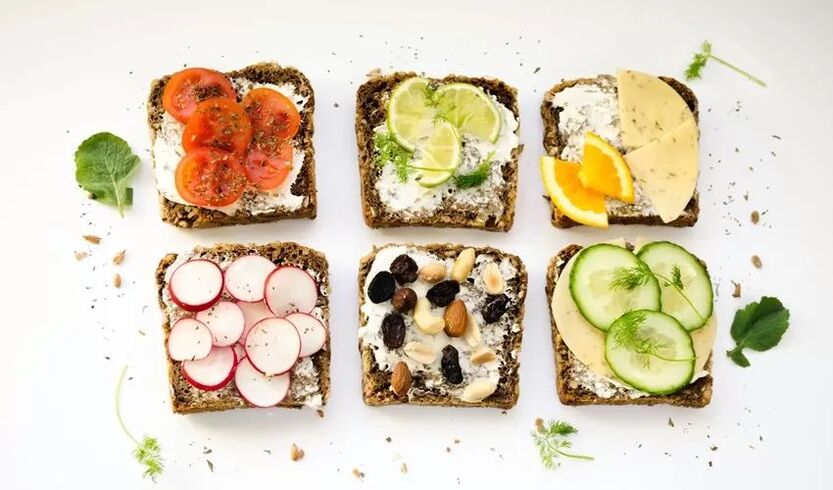
what foods to avoid
Certain foods go against the principles of healthy eating. It is necessary to exclude them from the diet or reduce their use to a minimum.These include:
- purchased canned food. To keep meat, fish, vegetables and beans long-term, manufacturers add dyes and preservatives to them, as well as add lots of salt and vinegar. Home canning should be a priority, but you shouldn't even get carried away with it.
- mayonnaise sauce. Many people like to use mayonnaise for cheese, garlic, hot sauce and other sauces. This dressing will not do the dish any favors.
- bacon. When bacon and fish, a lot of salt is added. Eating such foods will increase the burden on the kidneys.
- Fried food. They are usually cooked in poor quality oil, which can lead to excess weight.
- sweet carbonated drinks. They contain a lot of sugar, which is deposited on the body in the form of extra pounds.
- candy. They are called "fast" carbs. They can turn into excess weight if not eaten right away.
How to make a proper nutrition menu and what to look for
To create a properly nutritious diet, you need to take into account all of your characteristics. There is no one-size-fits-all menu, just like there are no equals. For example, the standard menu is not suitable for people with gluten intolerance because it contains it. First, you need to identify what restrictions individual diseases can impose, and observe them, adjusting the menu for yourself. Consultation with a doctor or nutritionist is recommended.
Calories- This is the energy formed during the breakdown and processing of food. It can range from 1800 to 3000 kcal per day, depending on: age, lifestyle, metabolic rate.
If you live an active lifestyle and get a lot of exercise, your menu will be higher in calories than the average person thanks to protein foods - active muscle growth and a fast metabolism.
Instead, a sedentary lifestyle requires reducing the ratio of carbohydrates to unhealthy fats to avoid weight gain because the excess calories consumed are not burned.
The approximate ratio of the substance per day is:
- Protein - 25-35%
- Fat - 25-35%
- Carbohydrates - 30-50%
Proteins are high molecular weight nitrogenous substances composed of amino acid residues linked by peptide bonds.
By source, protein can be divided into animal and plant. Animal protein sources include all meat products, fish, eggs, fatty cheeses. Plant proteins are found in leafy greens, vegetables, algae, legumes, nuts and seeds.
General Recommendations for Protein Intake- 1-2 g/kg weight. That is, if you weigh around 60kg, you need 60-90 grams of protein, half of which should come from plant protein.
It's also important to note that excess protein in the diet can have rather tragic consequences - it's a huge burden on the liver, kidneys, and the entire detoxification system.
FatIt is an organic compound composed of esters of glycerol and fatty acids. Fat is vital to us, especially for women. We, as always, if we diet, first of all we reduce fat consumption.
Fat is divided into saturated fat and unsaturated fat, and saturated fat is divided into monounsaturated fat and polyunsaturated fat. Saturated fats include all animal fats, butter and coconut oil. Unsaturated fats are vegetable fats, avocados, nuts, olives, seeds, fish and seafood.
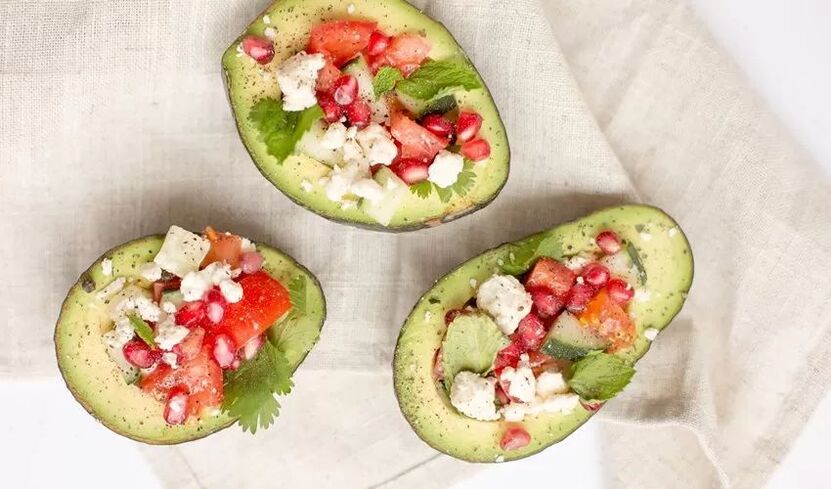
It is important to monitor the ratio of saturated and unsaturated fats because usually the predominance favors the former, although the reverse is better because unsaturated fats are the basis of all cell membranes.
The fat standard for adults is 1. 5-2 g/kg.
When eating fat, keep in mind the ratio of omega 3 to omega 6, ideally 5/1. This means that there should be more Omega 3 fatty acids in the diet. Western diets are devoid of omega 3 fatty acids and contain an excess of omega 6 fatty acids compared to the diets that humans evolved and established their genetic pattern on. Excess omega 6 polyunsaturated fatty acids (PUFAs) and extremely high omega 6/omega 3 ratios found in today's Western diets contribute to the pathogenesis of many diseases, including cardiovascular disease, cancer, inflammation, and autoimmune diseases, while omega 6/omega 33 Elevated levels of polyunsaturated fatty acids have inhibitory effects.
carbohydrateIt is an inorganic compound containing carbon (C) and hydroxyl (OH). Carbohydrates are the main source of energy in our body. In addition, carbohydrates are the most important players in digestion, stimulating the work of the large intestine.
Carbohydrates can be divided into simple carbohydrates and complex carbohydrates. Simple carbohydrates are water-soluble white crystals with a sweet taste. They have a high glycemic index and significantly increase blood sugar levels. This includes all products made from white flour, pasta, preserves, jams, honey, sugar and some dairy products. Complex carbohydrates, in turn, have a mechanical effect on the gut and do not cause significant increases in insulin and blood sugar. Sources of complex carbohydrates are grains, vegetables, fruits, berries and legumes.
Carbohydrate intake of 3-5 g/kg body weight. With moderate and vigorous physical activity, requirements may increase to 7 g/kg body weight.
Below is an example of an average daily diet for children, women and men with proper nutrition. In each case, you will need to adjust to your level of activity and your own taste. Everyone should avoid large amounts of sugar, soda, flour, convenience foods, and fast food. You need to split up to 4-5 times a day and get your main food amount 1 and a half times a day.
female
On average, a woman needs to eat around 1800-2000 calories. Fair sexes have slower metabolisms than men, so they gain weight faster. At the same time, unlike men, gaining muscle mass is difficult.
During pregnancy, there is the active growth of another organism, and in a sense it does take "two to eat". The calories in the diet of pregnant women should be between 2500 and 3500 kcal, so as to have enough nutrition for the growth of the child and further breastfeeding. Otherwise, the embryo "gets" what it needs from the mother's body, destroying the teeth and reducing overall weight.
men
In men, the metabolism is more active, and there is essentially more muscle tissue that requires the active nutrients of protein foods. On average, a man consumes about 2000 - 2900 calories per day. The calorie content of foods especially increases during periods of muscle development and rapid growth.

children
Throughout life, a person grows so actively that it only develops in childhood. Therefore, the calorie content of children's foods should be increased approximately every six months. During the exercise portion of the workout, the coach will help adjust the standard to take into account the load, and if the child is prone to obesity or underweight, the pediatrician and nutritionist will help. Each era has its own norms, depending on the needs of the moment. After 12-13 years, the calculations are almost like adults, taking into account positive sexual development.
Proper distribution of protein, fat, and carbohydrates is also required throughout the day.The basic distribution rules are as follows:
- breakfast- Complex carbohydrates. The best solution is to eat grains. However, don't forget that breakfast should include protein and fat in addition to complex carbohydrates for a balanced diet. Porridge can add oil, you can eat one or two more eggs.
- dinnerComplex carbohydrates, white meat and vegetables. Perfect for simmering with salads.
- dinner- Poultry, fish, eggs. Reduce the amount of carbohydrates you consume at night by adding more protein. Carbohydrates are needed for energy, and proteins are needed for cell and tissue regeneration.
- eliminate usefast carbsAfter 16: 00.
- Include snacks, if the gap between main meals is unbearable, preferably fat.
Proper Nutrition Menu Planning
Try to make the right menu yourself. Feel free to add whatever you like to your diet, remembering to eat only the right amount of food per serving, and the correct ratio of BJU. To do this, you can use ready-made menu examples, which are widely and varied on the Internet.
breakfast
Try not to skip your breakfast. It is he who plays an important role in the health of the body throughout the day.
breakfast menu example:
- Porridge + fruit or nuts + honey.
- Omelet + cheese + rye bread.
- Cheese + Fruit + Honey.
- oatmeal.
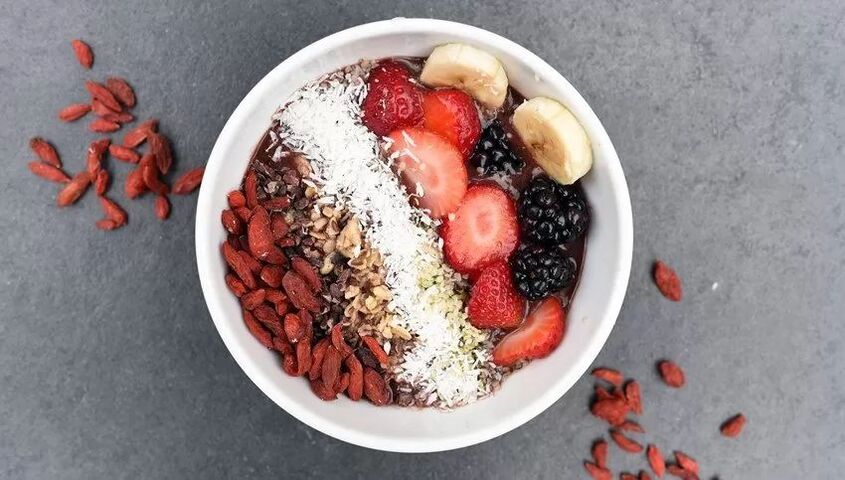
dinner
Lunch is traditionally a major part of the daily Russian diet. By skipping lunch, you'll stir up more and more hunger in the evening, so it's hard to stop overeating.
Sample lunch menu:
- Meat, fish + garnish + vegetables.
- Vegetable soup + meat, fish.
- Stew + meat, fish.
The essential ingredients for a healthy lunch are complex carbohydrates and protein.
dinner
It is generally accepted that a good dinner should be no later than 2-3 hours before bedtime. But skipping dinner can affect sleep and worsen, leading to increased hunger.
Dinner Menu Example:
- Chicken, fish + vegetables.
- Vegetable salad + eggs.
- Vegetable casserole.
- Vegetable salad with quinoa or other grains.
snack
You can and should add snacks if you're having trouble with three meals a day. Fatty snacks, like nuts, are best.
Proper Nutrition Recipes
In order for proper nutrition to easily enter life and become an integral part of life, it is necessary to pay attention to the variety of diet. You can buy recipe books with photos and step-by-step instructions. The recipes are on the theme website. Here are some interesting options.
Protein Pancakes
The quickest breakfast is protein or protein pancakes. Even novice cooks can cook them.
raw material:
- dry protein mix for baking - 100 g;
- any milk - 100 ml;
- sugar substitutes or berry syrup;
- Garnish with any fruit or berries, to serve.
Blend ingredients until smooth. Bake pancakes in a dry skillet without oil.
Curd dessert with fruit and gelatin
Primary school children's favorite dessert is fruit cheese. He will be able to replace sweets, all kinds of sweets, pastries. It's super easy to make and doesn't even require baking in the oven.
raw material:
- non-fat cheese - 200 g;
- Low-calorie sour cream or Greek yogurt - 100 g;
- sugar substitute or honey to taste;
- a tablespoon of lemon juice;
- one bag (15 grams) of gelatin;
- 100 ml of water;
- any fruit.
Dissolve a bag of gelatin in water and allow it to swell. Mix it with cottage cheese, sour cream, sugar substitute until smooth. You can blend it with a blender or blender. Put the fruit in the bottom of the bowl and put it on top - the curd layer, on top of the berries. Put in refrigerator for an hour.
Cheesecake with Bran and Banana
Another easy recipe for beginners is Light, Inexpensive, and Easy Cheesecake with Banana and Bran.
raw material:
- non-fat cheese - 300 g;
- 1 egg (only for protein);
- banana;
- Whole wheat flour - 3 tablespoons;
- bran - 2 tablespoons;
- a pinch of salt;
- sweetener.
Combine all ingredients and bake in a dry pan without oil. The flour can be replaced with oat flour in the coffee machine.
radish salad
Quick and easy dinner recipes for nutrition-appropriate beginner cooks.
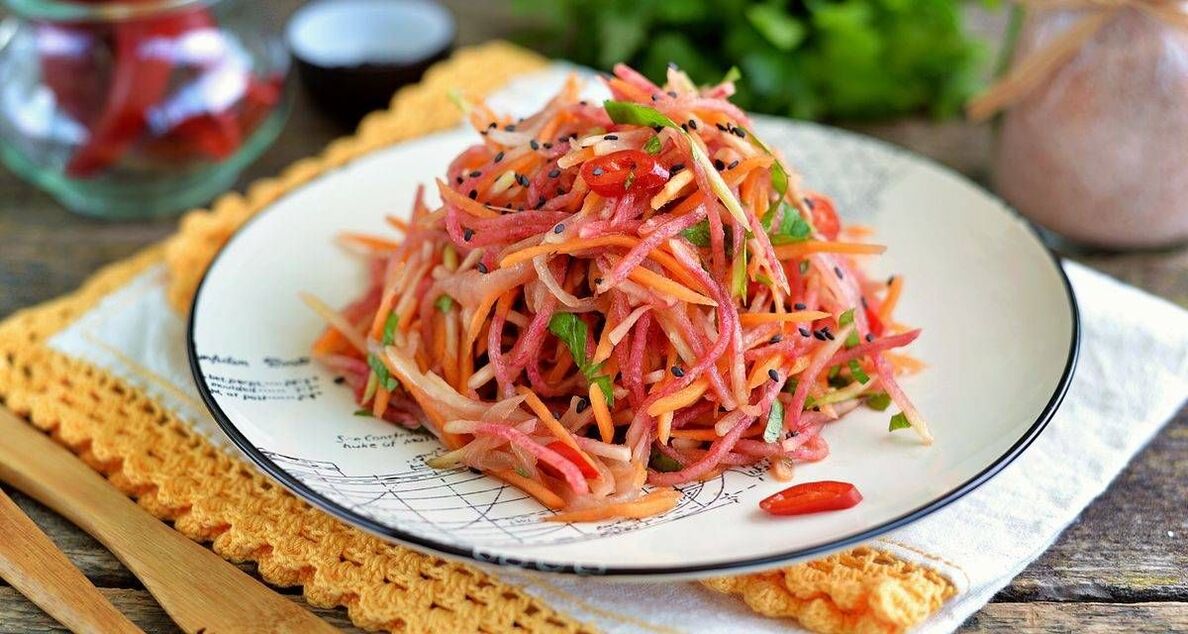
raw material:
- Radish - 150-200 g;
- Lettuce leaf mixture - 100 g;
- a small carrot;
- a bunch of green onions;
- three cloves of garlic;
- salt to taste;
- Vegetable oil for flavoring.
Chop vegetables and herbs, mix with vegetable oil, and rub garlic on a fine grater.
Beetroot Salad
The easiest, tastiest, and most familiar childhood salad is beetroot.
raw material:
- boiled beets - a small piece;
- Two or three cloves minced garlic;
- three tablespoons of sour cream or Greek yogurt;
- Salt.
Mix all ingredients. Serve with parsley.
Tuna Salad
A good dinner option is tuna salad.
raw material:
- The juice of the canned tuna itself - a can;
- Cherry tomatoes - 7-8 pieces;
- two eggs;
- a cucumber;
- a light bulb;
- a mixture of lettuce leaves;
- olive oil for flavoring;
- a little lemon juice;
- Salt.
Cut stock, mix, and season with lemon juice and olive oil.
Vegetable Chicken Soup
Soups must be included in the diet, especially for school children and students. One of the easiest recipes is chicken and vegetables.
raw material:
- two small potatoes;
- a light bulb;
- a carrot;
- Bell Pepper;
- tomato;
- Chicken fillets.
Cut chicken into cubes and bring to a boil. Add vegetables, salt to broth and cook until tender. To serve, garnish with herbs.
carrot soup
Carrot soup takes the lead in the ranking of the TOP funniest dishes for proper nutrition. Most people are skeptical. I believe that such food will not taste good. However, once carrot soup is properly prepared, many people keep it in their diet.
raw material:
- three large carrots;
- two potatoes;
- a tablespoon of butter;
- a light bulb;
- three cups of chicken stock or water;
- Salt, spices (curry, ginger, cardamom).
Cook vegetables until tender. Puree in a blender, add broth, butter, spices.
Brussels Sprouts Soup with Cream
This soup can be cooked on the stove or in a slow cooker.
raw material:
- chicken stock - liter;
- Brussels sprouts - 300 g;
- a carrot;
- Leek - half root;
- onion - one piece;
- two tablespoons butter;
- two or three potatoes;
- 100 ml cream;
- an egg;
- Salt, ground black pepper, nutmeg, bay leaf.
Cook vegetables until tender. Blend in a blender until smooth, add broth, cream, butter and spices.
tomato soup
You can make a quick tomato soup for dinner. This is a delicious and unusual yet simple and healthy dish.
raw material:
- tomatoes - 1 kg;
- onion;
- a few cloves of garlic;
- Cream - 100 ml;
- two tablespoons olive oil;
- Salt, oregano, basil.
Blanch the tomatoes with boiling water, peel them, and add the onions to a simmer. After they get a uniform consistency, add oil, spices, salt.
Light Braised Cabbage Recipe
You can simmer cabbage in a skillet, slow cooker, or regular skillet. This simple dish can be a great side dish for dinner or lunch.
raw material:
- Cabbage - 500 grams;
- Small bulbs;
- radish;
- two tablespoons vegetable oil;
- salt, black pepper.
Chop the onion and cabbage, and grate the carrots. Simmer in a frying pan with oil and water until tender.
Grilled Chicken with Vegetables
The perfect lunch is chicken grilled with vegetables.
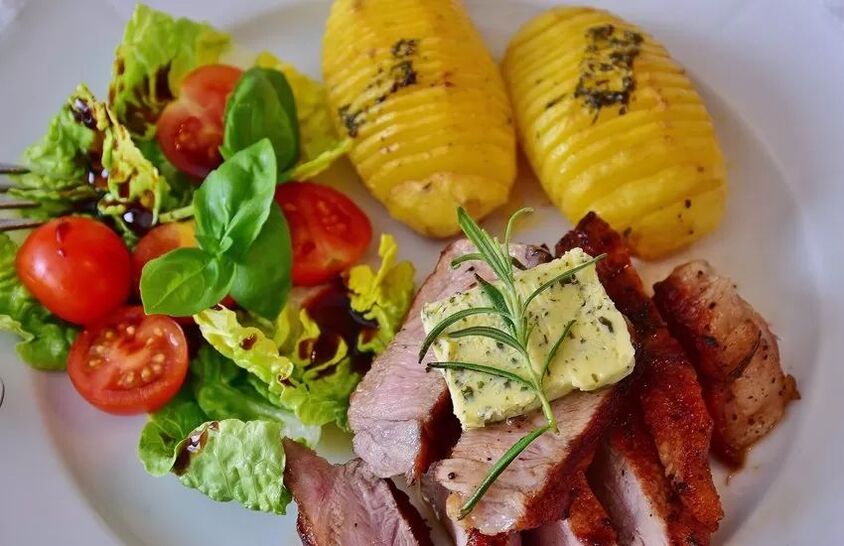
raw material:
- chicken fillet;
- Bell Pepper;
- tomato;
- onion;
- radish;
- Potato;
- Two tablespoons vegetable oil or low-fat sour cream.
Cut vegetables and meat into cubes, place in molds, and add butter or sour cream. Bake in the oven until done, about 30-40 minutes.
Chicken Tenderloin with Mustard Sauce
This option is suitable not only for everyday dinners, but also for festive feasts.
raw material:
- Chicken fillet - 500 g;
- a carrot and onion;
- three tablespoons low-fat sour cream;
- two tablespoons;
- two teaspoons flour;
- a glass of water;
- some vegetable oil.
Marinate the meat in advance with sour cream and mustard for an hour and a half. Sauté carrots and onions in a pan, add meat, and boil water. Simmer until cooked.
Zucchini Casserole
A fun option for dinner or lunch is a zucchini casserole.
raw material:
- vegetable marrow;
- a light bulb;
- a bell pepper;
- tomato;
- two or three eggs;
- 200ml kefir or low-fat sour cream;
- some low-fat cheeses;
- Salt, pepper, herbs to taste.
Cut vegetables into thin strips. Layer up and spread with sour cream or kefir. Bake in the oven for 40-50 minutes. Sprinkle with cheese and herbs before serving.
chicken rice
Usually pilaf is cooked with pork. The result is fat and heavy. A healthy but equally delicious alternative is chicken.
raw material:
- chicken fillet;
- radish;
- onion;
- Rice (polished or browned) - 1 cup;
- water - two glasses;
- Two tablespoons vegetable oil.
Cut chicken breasts into cubes and fry over low heat with onions and carrots. Pour in a cup of rice, pour in water, and cook until soft.
Proper nutrition is a delicious, healthy, varied diet that not only leads to a beautiful figure, but also to good health and well-being.






























